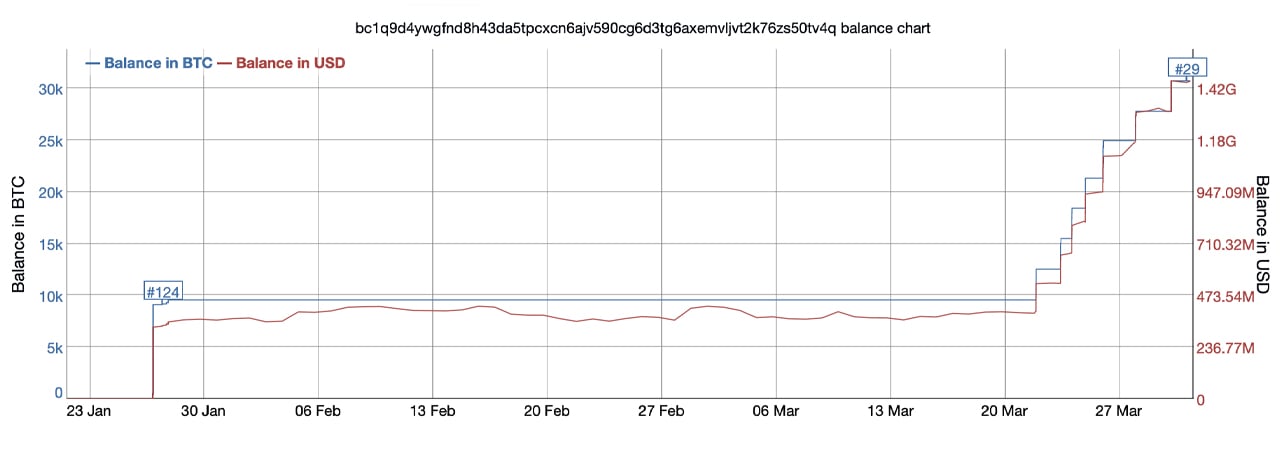Digital Performer 11’s comprehensive feature set and unique modular organizational features make it great for film/game scoring and live multimedia events. But it’s also complex with a steep learning curve.
When users discuss the premier digital audio workstations (DAWs) on the market these days, the $499 Digital Performer 11—a former top dog—doesn’t always make the list. That’s sad, not to mention a bit of an injustice. DP 11 is as powerful as any of its competitors, and it also has a unique modular approach to composition and project organization that makes it a particularly good fit for movie scoring and complex live shows.
MOTU has been hard at work the last few years updating Digtial Performer’s feature set and modernizing the interface and workflow. There’s still a ways to go on the latter, but if you’ve gone to sleep on DP, you should take another look. A long look, because it’s not a program you can just dive into and expect immediate results.
Forget what you see when you first run Digital Performer. It’s impressive, not to mention a tad daunting, but what sets this DAW apart isn’t readily apparent: the aforementioned modular composition and organizational facilities.
The heart of any DP project is the Sequence, which is actually more akin to most other DAWs song or project–a multi-track recording with instruments, a mixer, aux busses, etc. A Sequence can be any length from a single note to an entire symphony, and you can have as many Sequences as you want in a project file, as well as freely cut and paste between them.
The real fun, however, begins when you arrange Sequences into what DP refers to as Songs (the editor shown above). When you realize that Songs may be nested within other Songs… well, it’s party time. The organizational possibilities are staggering.
Back to the daunting feature set.
DP’s features include: non-destructive audio editing in tracks; multi-take comping with lanes; a top-flight destructive audio editor (changes are permanent), audio stretching and transient editing, VCA faders for the recording engineer/editing folk; articulation maps and notation (multi-instrument with lyrics) for the orchestral crowd: multi-polyphonic expression (MPE) and MIDI 2.0 features for those with MPE keyboards; virtual instruments (proprietary, as well as VST 2/3 and AU); and multiple tempo/meter/key signature support.
[Taking a deep breath…]
Beat and tempo detection; MIDI grooves and humanize; logical MIDI and time editing; MIDI step recording; extensive SMPTE/video with support for all the common frame rates as well as user-defined; a spectrogram view for audio clips; import/export of OMF, AAF, MIDI, MusicXML and DP projects for any version back to 3.1; and bouncing stems (entire audio tracks) to disk and CD.
The program is also constantly recording audio and MIDI in the background (Retrospective recording–it can be disabled) for those moments of brilliance when you’re just noodling around and there’s no red light to be seen. (record buttons inevitably light up red)
There are a couple of technologies that DP doesn’t currently support. One is Control Voltage (CV) for modular synths. If you’re one of the relatively few users with this interest, you can, of course, work around as with many DAWs, or purchase MOTU’s Volta MIDI to CV converter plug-in for a cool $249. Gulp. I have not tried Volta and can’t vouch for it.
The other missing feature is Audio Random Access (ARA). This technology allows audio editing plug-ins such as Melodyne and Spectralayers to access audio files as if the editors were part of the program. As DP has its own pitch/time editing and spectral view, I’m cutting MOTU slack on this one.
At the pace MOTU is modernizing DP, I wouldn’t be surprised to see these omissions remedied in the very near future.
DP also offers a wide variety of plug-in instruments and effects. Synths include the monophonic BassLine, multi-voice PolySynth (Juno 106 inspired), Nanosampler (Sample player), Modulo (waveform synthesizer), Model 12 (Drum machine), and the MX4 which combines multiple synthesis methods including subtractive, FM, AM, wavetable, and analog emulation.
The look of the synths is largely skeuomorphic (mimicking the look of real-world hardware), which means some small buttons and what have you. They were still quite usable on my 5K display and I was impressed with the quality of the sounds.
Also included is a license for the UVI Workstation multi-sample player, which is used for the MOTU Instruments bundle you can see in the image below. The bundle covers a wide range of genres (orchestral, pop, etc.) and many instruments are are velocity-layered (samples change according the velocity of the note).
Some are even key-switched, multi-articulation types. That means if you press an assigned key low down on your musical keyboard, or enter it using DP’s articulations function (in a MIDI editor) you can switch the instrument between pizzicato, marcato, sustain, etc.
MOTU Instruments won’t replace more expensive orchestral libraries, but I’d stack many of them up to what you find in most other top DAWs, with the possible exception of Universal Audio’s Luna.
Audio loops aren’t forgotten either as you can see in the image above. There’s a broad selection, covering a wide range of genres. Well, genres that use looped material at any rate.
There’s also a host of effects, from plate reverb, to guitar/bass amp simulations, to parametric EQs, to filters and just about anything else you can think of. The majority are top-notch. If you have your own, fine, but DP has you more than covered if you don’t.
DP 11 is also as adept as any DAW at interfacing with the outside world. Not only via MIDI (including the aforementioned MPE and MIDI 2.0), which has been supported from the get-go, but with the SMPTE (film) world at large. It also supports a wide variety of control surfaces.
In today’s DAW market, where basic feature sets are nearly identical, graphic interfaces and workflow have become prime delineators in the mind of many customers. In other words, appearance and ease of use matter.
DP 11’s default look is attractive and business-like, and it’s also extreme flexible and customizable—more so that any of the major DAWs, save possibly Reaper. On the other hand, it’s also a real handful for the uninitiated because of the sheer number of options and possibilities (and other factors that I’ll get to).
The paned main window, or “consolidated” window in DP-speak, is where most of the action takes place by default. But you can also convert most of the panes to separate windows, which is very handy for multi-monitor setups.
In the consolidated window, the center pane (body in DP) is where the serious editing, recording, and mixing are done. The left and right panes (sidebars in DP) feature auxiliary functionality: channel strips, content, lists, project notes, etc.
DP 11 is fully scalable; the entire interface can be enlarged or diminished by percentage. Shown above is the same project at 100 and 150 percent. This accommodates displays of any size or pixel density, as well as users with weak or excellent eyesight. You can also change the size of some of the text, vary the color palette, and even the overall look via themes.
Beyond that, numerous interface elements (tool sets, readouts, functions, etc.) may be hidden or shown to reduce clutter; panes and windows arranged to taste; and the results of your handiwork saved as Window sets. I suggest you make heavy use of them once you’re up to speed. DP 11 can be eccentric about where it places things on its own.
Below is the control panel with all elements shown, and with a bare minimum of buttons and functions. You can also tailor the readout if you so desire.
Despite the general malleability of the interface, there are still some old-school tiny icons (zoom controls) that require a fair bit of precision with the mouse. You can generally avoid finicky operations of all types by using DP’s copious computer keyboard shortcuts. You can define your own as well.
To be fair, the tiny icon rap (or blessing if you like them) may be laid on other DAWs of the same vintage (80’s), such as Logic, Cubase, and Pro Tools.
The first thing to know about DP’s interface as you try to wrap your head about it, is that the tabs in the main window pane are arranged for convenience, not to convey hierarchy or workflow. They represent a mix of high-level editors, low-level editors, and mixing tools.
The other vital piece of info is that the Tracks and Sequence tabs are basically different views of the aforementioned essence of DP, the Sequence. In fact, the Tracks tab is also referred to as the Tracks Overview in the user’s guide.
The Tracks tab provides a high-level view and editing of a Sequence’s tracks with a host of navigation options for large track counts, including a filter-as-you type field. The Sequence tab provides in-track editing of the MIDI/audio in said tracks. You can record using either and both share elements of functionality.
The Song editor (shown below) gives DP its unique compositional and arranging power. You can orient Sequences and Songs linearly or in parallel to play across time and/or simultaneously.
Note the “Chunks” list to the right. “Chunk” is an abstraction for Songs and Sequences–you drag chunks from the Chunks List (shown to the right) into the Song’s timeline. (Yes, I know I skipped over a couple of tabs. They’re covered below.)
If your compositions are smaller in scale, or more improvisational in nature, or you want to DJ at the local club, you can also compose/arrange/play using DP 11’s Clips tab, à la Ableton Live. DP 11’s implementation is a bit more versatile as you can fire off entire tracks if you wish, and yet-to-be-played clips are moved to a visible queue. It’s designed quite well and has creative potential beyond others of its ilk.
The MIDI and Drum tabs are MIDI clip/track editors; QuickScribe is multi-stave notation editing of MIDI information; and the Mixing Board/Meter Bridge tabs are a mixer and large signal level meters.
There are other important Digital Performer constructs you should be aware of:
V-Racks are virtual racks of instrument and auxiliary tracks (sub-mixes, effects, etc.) that are available to any Sequence in a project. These save memory and load time when switching between Sequences that use the same instruments.
Confusingly, V-Racks are also referred to as Chunks, even though you can’t drag them into the Song arranger. V-Racks are created and edited in the Mixing Board tab (or the Chunks list).
Along with “Chunks”, DP serves up other abstractions such as “Bundles”, which most users would refer to as patch bays. You can create as many Bundles as you want so you can travel with your project to different audio/instrument environs. There are also “Soundbites”, or bites, which are simply audio clips or files. (Why MOTU?)
Note: Every virtual instrument in DP currently has its own track. Most other DAWs let you use virtual instruments as plugins on a MIDI track.
I’ve barely scratched the surface here. DP has more ways to do things than you can shake a stick (or a workflow) at, and often several ways to accomplish the same goal. There’s a yin and yang to that–flexibility versus complexity. If you’re kicking the tires, take some time to peruse the Preferences dialog (seen below) and you’ll see what I mean.
Once you’ve got your head around DP’s modular concept and interface, you can delve into the vast array of functions and methods. A day or three with the 1,000-page user’s guide is a good start. Or you can jump-start the learning process using the Commands Window, which lists the copious functions.
Just to give you a taste of those abilities and methods…
By default, the Sequence editor uses clip-less (endless) lane editing, though you can also use the more common clips if you prefer. DP even lets you pack data into clips, which can be very handy for grabbing and encapsulating musical ideas. You can also extract the data out of clips into the lane.
The Sequence tab also features “edit layers” which are overlaid on the basic audio/MIDI data. These include audio volume (bite volume in DP), pitch, timing of audio transients (stretch), articulations (playing techniques for virtual or external instruments, e.g., staccato), etc.
You may also view and edit automation in discrete, drop-down lanes as seen below.
Next up is a unique spectrographic view of audio material. This can help you spot frequency hotspots and noise.
When you’re working with MIDI that you’ve encapsulated into clips, or in the Clips launcher, you get the editor seen below. It’s much the same as the MIDI editor accessed from the main tab but has options pertinent to the clip as well.
I was impressed with DP’s QuickScribe multi-instrument, multi-stave notation engine. It did a good job generating notation that’s actually readable/playable from imperfect MIDI information I fed it.
As to the overall usability of DP, MOTU seems as if they’re hell-bent on modernization so I’m not going to nit-pick at this point. It all makes sense once you know DP, but two suggestions: rework the interface to reflect the synergy/dichotomy of creation and arrangement–and ditch the flowery abstracts.
I had zero performance issues in DP with “Pre ren” enabled so that tracks are pre-rendered, i.e. mixed to audio files. Pre-rendering lowers CPU usage but removing effects or virtual instruments from the playback task (multi-track audio is child’s play comparatively). This can be incredibly handy when you have large orchestral templates, large amounts of effects, etc. There’s even a Pre gen meter that you’ll see light up when DP works its magic.
Even in “Live” mode where all instruments and effects are applied in real time (use this when you’re “playing” instrument controls like filters), I had the only occasional CPU overload. This was quickly eliminated by upping the buffer size from 64 to 128, which still left me with decently low latency for recording.
The DP 11 interface in general was very snappy on my 32GB, Core i7 iMac. Importing and saving was was quick, new tracks were created in no time (not counting loading virtual instruments), and in general DP is a facile as the competition.
I didn’t bang on version 10, but overall DP 11 was very stable over my three weeks of thrashing about with it. I managed a crash or two with window sets (this disappeared), and it didn’t always like my opening other daws, but that could just have easily been the other DAWs. By and large everything worked just fine, and judging from the scuttlebutt, version 11 seems to have fixed most user complaints about bugs in v10.
I’d be remiss if I didn’t cover the limited, albeit surprisingly powerful and easier version of DP called Performer Lite. It’ll even load DP projects, though you might have to replace some effects and instruments.
Performer Lite is free to owners of MOTU’s highly-regarded audio interfaces such as the M2, M4, UltraLite-mk5 and includes a nice assortment of the instruments and samples (MOTU Instruments Lite) shown above.
As to those audio interfaces; I’ve had my eye on an UltraLite-mk5 (great specs, great reviews, and input effects like those found in Universal Audio’s Volt interfaces.) even if it costs over $500 and I already own a fantastic Focusrite Clarett 4Pre. I’ve been saved from this little bit of retail therapy by said interface’s current scarcity.
While Performer Lite has limits: 16 audio, 16 MIDI, 16 auxiliary (bus) tracks, and 6 Sequences, they’re extremely generous compared to competitors such as Ableton Live Intro (16 tracks total–also bundled with MOTU interfaces) and Bitwig 8-track (eight hybrid audio/MIDI tracks), etc. Put another way, working with Performer Lite as your main DAW is doable, where the others exist almost exclusively to upsell you to more expensive and capable versions.
Missing from Performer Lite are the destructive Waveform editor, Tracks overview, as well as “Chunks” and the full-on Song editor, though there is a Set List for Sequences. Happily, there’s still the Ableton-like Clips window and most of the inline editing functionality–including audio transient/note timing, which is about the only thing I ever edit. Performer Lite is not a toy by any stretch of the imagination.
The simpler (but still powerful) feature set, organization, less complex interface make Performer Lite a much better fit for the average musical creative than Digital Performer. It’s likely worth the price of a $200 M2 or $270 M4 on its own, and you get a great audio interface in the bargain. It’s a bit of a puzzler why MOTU doesn’t offer it for sale as a standalone product.
Digital Performer 11 is vastly capable and extremely flexible. It will handle any role from live performance to primary studio DAW. And thanks to its modular arrangement capabilities, it’s exceptionally well-suited to developing soundtracks, scoring longer pieces of music, and organizing your musical ideas. Hence the 4.5 stars.
However, DP 11 is also initially cumbersome and sports what’s arguably the industry’s steepest learning curve. For that reason, it’s best for pros or exceptionally ambitious newcomers who need or desire its advanced features and capabilities.
The average songwriter/musician will be better served with something that’s easier to get up to speed on, such as Performer Lite. But there’s a host of choices.
You can kick DP’s tires via a fully functional 30-day demo. As noted, Performer Lite requires the purchase of a MOTU audio interface.
Note: When you purchase something after clicking links in our articles, we may earn a small commission. Read our affiliate link policy for more details.
Jon is a musician, former x86/6800 programmer, and long-time computer enthusiast living in the San Francisco bay area.
Macworld UK
Macworld Sweden
Macwelt Germany
Subscribe to the Macworld Digital Magazine
Manage Subscription
Newsletter



